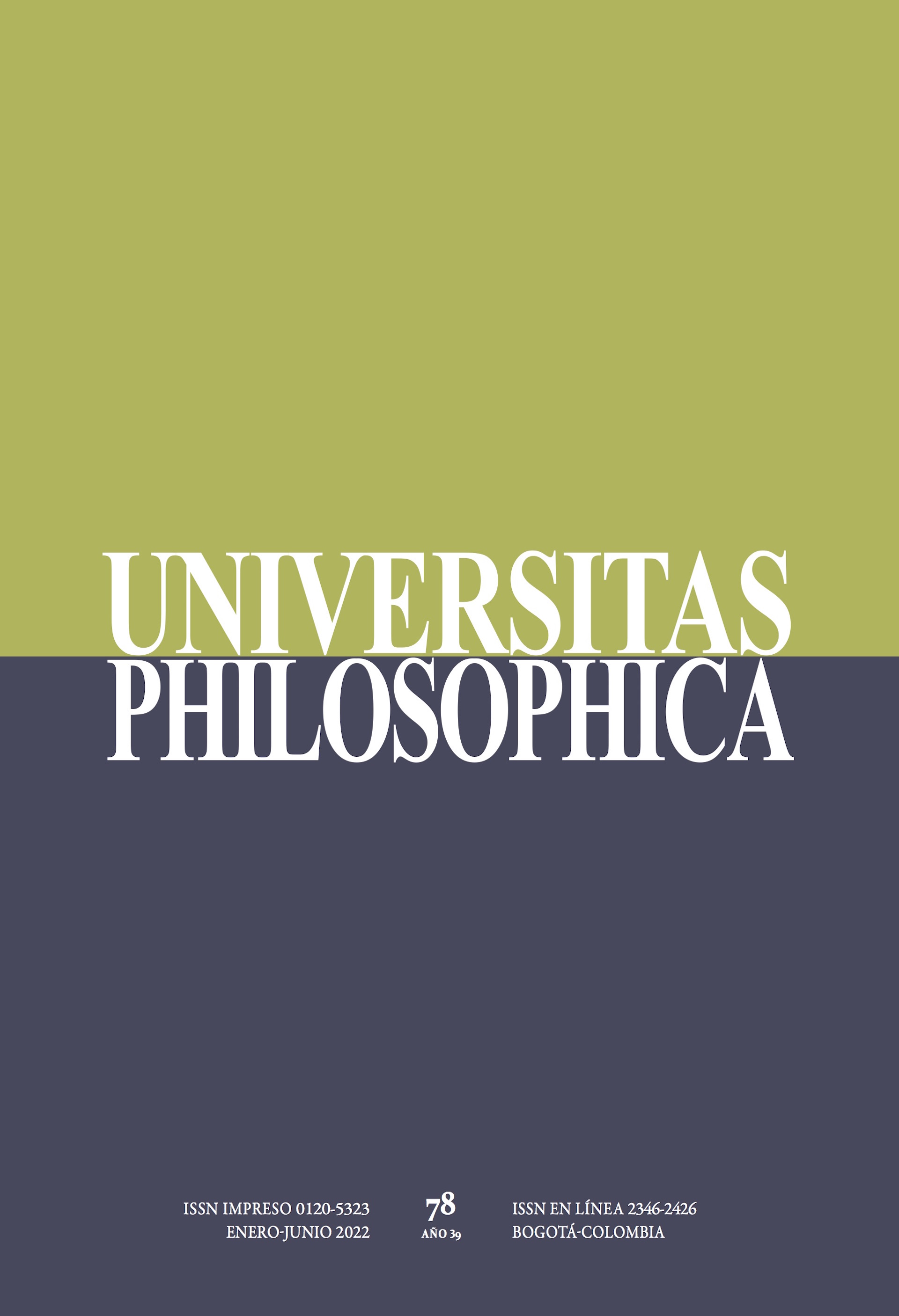Abstract
The present work aims to address the problem of the limits of the interpretation of images. The underlying question is whether or not it is possible to orient ourselves in front of them and, if so, how we can do it. On the one hand, the analysis of this question has as its central theme the conception of art history as a science that manifests a concrete knowledge about images, and on the other hand, the idea that art history must be rethought, since artistic images cannot be comprehended in their entirety through an alleged knowledge, as they also inhabit irrationality, doubt, and even temporal gaps that allow us to conclude that it is pretentious to generate a historical tone that affirms an exact epistemology of art. Thus, this aesthetic problem will be approached through Panofsky’s iconology, Heidegger’s ontology, and Didi-Huberman’s discursive archeology.
Benjamin, W. (2008). Sobre el concepto de historia. Obra completa. Libro I/vol. 2 (pp. 303- 318). Abada Editores.
Berger, J. (Dir.) & Dibb, M. (Prod.) (1972). Ways of Seeing [Television series]. BBC. IMDbPro.
Burke, P. (2003). Formas de hacer historia (2.a ed.). Alianza Editorial.
Cabello Padial, G. (2020). Entre el reparto de lo sensible y la imagen crítica. A propósito de una discusión entre Jacques Rancière y Georges Didi-Huberman. Theory Now: Journal of Literature, Critique and Thought, 3(2), 22-38.
Cassirer E. (2016). Antropología filosófica: introducción a una filosofía de la cultura. Fondo de Cultura Económica.
Didi-Huberman, G. (2004). Imágenes pese a todo. Paidós.
Didi-Huberman, G. (2005). Confronting Images: Questioning the Ends of a Certain History of Art. The Pennsylvania State University Press.
Didi-Huberman, G. (2006). Ante el tiempo: historia del arte y anacronismo de las imágenes (1.a ed.). Adriana Hidalgo Editora.
Didi-Huberman G. (2010). Ante la imagen: pregunta formulada a los fines de la historia. Cendac.
Didi-Huberman, G. (2011). Atlas. ¿Cómo llevar el mundo a cuestas? Museo Nacional Centro de Arte Reina Sofía.
Didi-Huberman, G. (2013a). Cuando las imágenes tocan lo real. Edición Círculo de Bellas Artes.
Didi-Huberman, G, (2013b). La imagen superviviente. Abada Editores.
Fisgativa, C. (2013). Imágenes dialécticas y anacronismo en la historia del arte (según Georges Didi-Huberman). Revista Filosofía UIS, 12(1), 155-180.
Harries, K. (2009). A Pair of Shoes. En Art Matters: A Critical Commentary on Heidegger’s “The Origin of the Work of Art” (pp. 83-94). Springer.
Hegel, G. W. F. (1989). Lecciones sobre la estética. Ediciones Akal.
Hegel, G. W. F. (2005). Lecciones sobre la filosofía de la historia. Tecnos.
Heidegger, M. (2007). Conceptos fundamentales de la metafísica. Alianza Editorial.
Heidegger, M. (2010). Caminos del bosque. Alianza Editorial.
Heidegger, M. (2015). Ser y Tiempo. Editorial Universitaria.
Heródoto (1972). Los nueve libros de la historia. W. M. Jackson.
Massó Castilla, J. (2017). Las paradojas de la historia del arte. Anthropos: cuadernos de cultura crítica y conocimiento, 246, 101-112.
Leibniz, G. (2013). Ensayos de teodicea: sobre la bondad de Dios, la libertad del hombre y el origen del mal. Sígueme Ediciones.
Lowith, K. (2013). Historia del mundo y salvación. Katz Editores.
Panofsky, E. (2006). El significado en las artes visuales. Alianza Editorial.
Schaeffer, J. (2000). Art of the Modern Age. Princeton University Press.
Schapiro, M. (1968). The Still Life as a Personal Object – A note on Heidegger and Van Gogh. Springer. https://doi.org/10.1007/978-3-662-40265-8_14
Tatarkiewicz, W. (1995). Historia de seis ideas. Editorial Tecnos.
Vasari, G. (2002). Las vidas de los más excelentes arquitectos, pintores y escultores italianos desde Cimabue a nuestros tiempos. Cátedra.

This work is licensed under a Creative Commons Attribution 4.0 International License.
Copyright (c) 2022 Andrés Primiciero Matamoros


